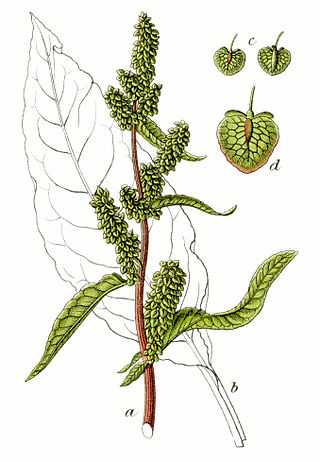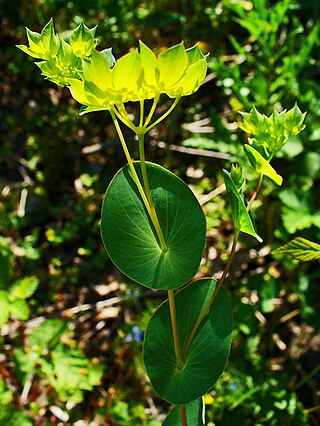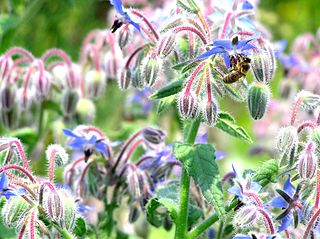
The docks and sorrels, genus Rumex, are a genus of about 200 species of annual, biennial, and perennial herbs in the buckwheat family, Polygonaceae. Members of this genus are very common perennial herbs with a native almost worldwide distribution, and introduced species growing in the few places where the genus is not native.

Mahonia is a genus of approximately 70 species of evergreen shrubs and, rarely, small trees in the family Berberidaceae, native to eastern Asia, the Himalaya, North and Central America. They are closely related to the genus Berberis and botanists disagree on whether to recognize a separate Mahonia. Many botanists prefer to classify Mahonia as a part of Berberis because several species in both genera are able to hybridize, and because there are no consistent morphological differences between the two groups other than the leaf pinnation. However, recent DNA-based phylogenetic studies retain the two separate genera, by clarifying that unifoliolate-leaved Berberis s.s. is derived from within a paraphyletic group of shrubs bearing imparipinnate evergreen leaves, which are then divided into three genera: Mahonia, Alloberberis, and Moranothamnus ; a broadly-circumscribed Berberis would also be monophyletic.

Androsace, commonly known as rock jasmine, is a genus of flowering plants in the family Primulaceae, second only to Primula in the number of species. It is predominantly Arctic–alpine, with many species in the Himalayas, the mountains of central Asia, the Caucasus, and the southern and central European mountain systems, particularly the Alps and the Pyrenees.

Bupleurum is a large genus of annual or perennial herbs or woody shrubs, with about 190 species, belonging to the family Apiaceae. The full size of its species may vary between a few cm to up to 3 m high. Their compound umbels of small flowers are adorned with bracteoles that are sometimes large and may play a role in attracting pollinators. Rare among the Apiaceae are the simple leaves, bracts, and bracteoles. The genus is almost exclusively native in the Old World Northern Hemisphere, with one species native to North America and one species native to southern Africa.

Hackelia (stickseeds) is a genus of plants in the borage family, Boraginaceae. It includes 54 species found in North America, western South America, temperate Eurasia, and Australia. 12 species are native to California.

Hedysarum (sweetvetch) is a genus of the botanical family Fabaceae, consisting of about 200 species of annual or perennial herbs in Asia, Europe, North Africa, and North America.

Zygophyllum is the type genus of the flowering plant family Zygophyllaceae. The generic name is derived from the Greek words ζυγόν (zygon), meaning "double", and φυλλον (phyllon), meaning "leaf". It refers to the leaves, each of which have two leaflets.

Boraginoideae is a subfamily of the plant family Boraginaceae s.s, with about 42 genera. That family is defined in a much broader sense in the Angiosperm Phylogeny Group (APG) system of classification for flowering plants. The APG has not specified any subfamilial structure within Boraginaceae s.l.

Sun Yueh was a Taiwanese actor.

Eutrema is a genus of flowering plants of the family Brassicaceae, native to the Holarctic. Its best known member is wasabi, Eutrema japonicum. The name comes from the Greek εὐ- (eu-) 'well' et τρῆμα (trêma) 'hole', because of a hole in the septum of the fruit.

Smelowskia, sometimes called false candytufts, is a genus of flowering plants in the crucifer family Brassicaceae, native to mountains and arctic regions of Asia and western North America. They may or may not be of Beringian origin.











